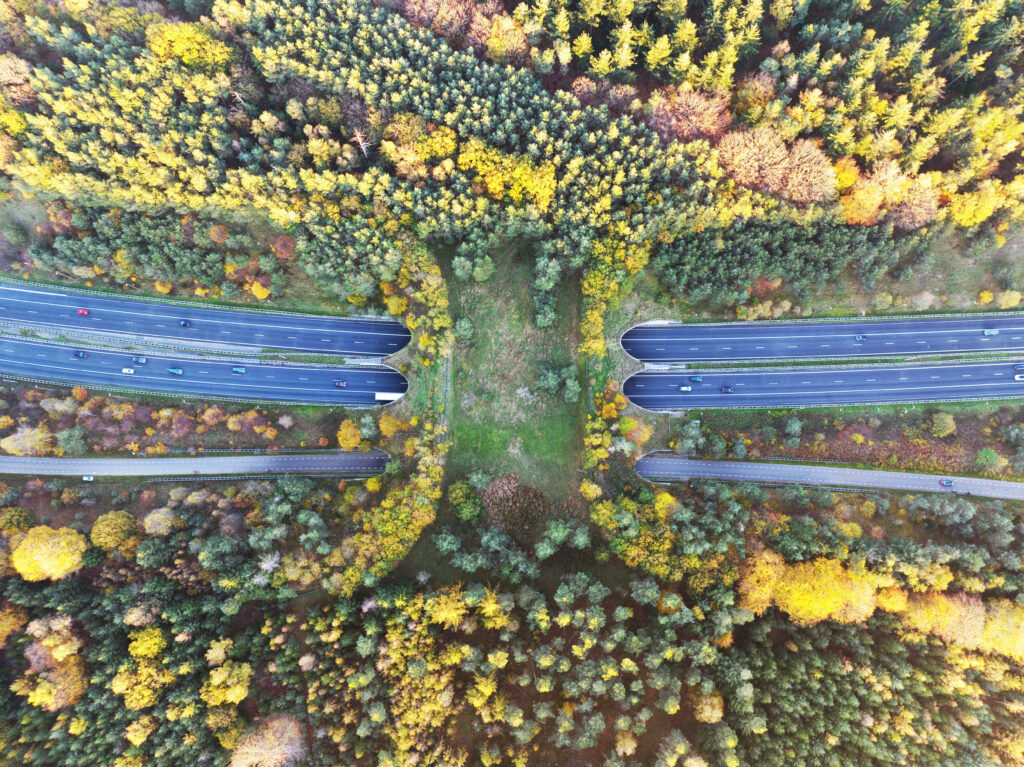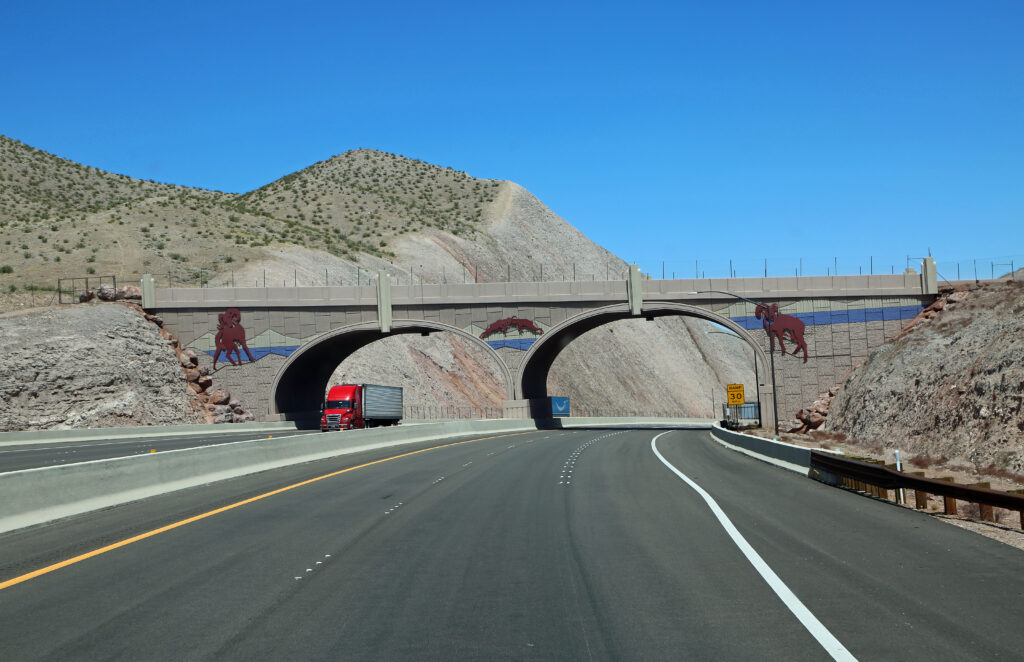The West-Wide Study analyzed three factors: collisions, connectivity, and costs
NEWS RELEASE
September 13, 2023
 Bozeman, MT ─ As our nation’s highways get bigger and busier, wildlife habitat and populations become more fragmented, and wild animals find it increasingly difficult to safely cross roads. The wildlife-vehicle collisions that kill more than one million large mammals each year in the U.S. also cause hundreds of human fatalities and tens of thousands of injuries. To help address this dangerous problem to both wildlife and people, the nonprofit Center for Large Landscape Conservation, Montana State University’s Western Transportation Institute, and Dr. David Theobald with Conservation Planning Technologies have published the results of the West-Wide Study to Identify Important Highway Locations for Wildlife Crossings.
Bozeman, MT ─ As our nation’s highways get bigger and busier, wildlife habitat and populations become more fragmented, and wild animals find it increasingly difficult to safely cross roads. The wildlife-vehicle collisions that kill more than one million large mammals each year in the U.S. also cause hundreds of human fatalities and tens of thousands of injuries. To help address this dangerous problem to both wildlife and people, the nonprofit Center for Large Landscape Conservation, Montana State University’s Western Transportation Institute, and Dr. David Theobald with Conservation Planning Technologies have published the results of the West-Wide Study to Identify Important Highway Locations for Wildlife Crossings.
The study highlights road segments in 11 western states: Arizona, California, Colorado, Idaho, Montana, Nevada, New Mexico, Oregon, Utah, Washington, and Wyoming. It takes a fresh approach by integrating ecological, economic, and safety considerations to identify the sections of highway across the West that are best served by future wildlife crossings with fencing.
“This study is unique,” explains Kylie Paul, road ecologist at the Center for Large Landscape Conservation and co-author of the study. “Rather than primarily focusing on wildlife-vehicle collision locations, we used several factors to highlight locations where building a wildlife crossing structure might address conservation needs and cost savings, in addition to the standard focus on human safety. Additionally, we looked across the West and at states individually to help provide a regional context,” says Paul.
It is one of the first studies to look at all western states with a consistent regional methodological approach, providing comparable analyses for each state. It offers information to help federal and state agencies and other stakeholders focus in on areas to further examine where wildlife crossings can be deployed. Other studies have been conducted in individual states and this new West-wide study is meant to complement or supplement previous analyses. Those studies may have finer-scale and local data that may highlight different locations and capture local context not considered here, and this study is not meant to replace or outweigh those locations.
The study finds that wildlife-vehicle collisions with species like deer cost a minimum of $1.6 billion per year across the western U.S. “Implementing wildlife crossings—underpasses or overpasses with fencing—more extensively could significantly reduce roadways’ impacts on wildlife,” says study co-author Matthew Bell, research engineer at the Western Transportation Institute. Bell explains that the study used updated collision and wildlife crossing structure economic cost values to highlight locations where the cost of building a crossing structure is less expensive than the cost of letting wildlife-vehicle collisions continue.
“We showed that in several hundred locations across the West, constructing a crossing structure and fencing would actually be cheaper over the long-term than doing nothing, while also enhancing wildlife conservation efforts,” says Bell.
The study comes at a time of increased interest, momentum, and policies for building wildlife crossings and implementing other mitigation measures in the U.S., including $350 million in federal funding from the Wildlife Crossings Pilot Program, part of the Bipartisan Infrastructure Law.
The three main components of the study are available online and include the full report containing both the West-wide analysis and 11 individual state analyses, plus a mapping website where users can examine the results at a variety of scales, select different map layers of interest, and download the data.
The West-Wide Study was funded in part by a generous grant from The Volgenau Foundation.
For more information and to view full report: largelandscapes.org/west-wide-study
About the Authors
The Center for Large Landscape Conservation advances ecological connectivity for climate resilience worldwide through science, policy, practice, and collaboration. largelandscapes.org
The Western Transportation Institute at Montana State University is the country’s largest university based research center focused on rural transportation issues. westerntransportationinstitute.org
Dr. David Theobald is a science advisor to the Center for Large Landscape Conservation and a research scientist at Conservation Planning Technologies in Fort Collins, Colorado, a company which he founded in 2013.
###
Contact: Christine Weinheimer, Communications Manager, Center for Large Landscape Conservation, communications@largelandscapes.org
Photos, top to bottom: Wildlife crossing, U.S. Route 95 in Nevada – Adobe Stock; Example of wildlife overpass, aerial view – Adobe Stock



